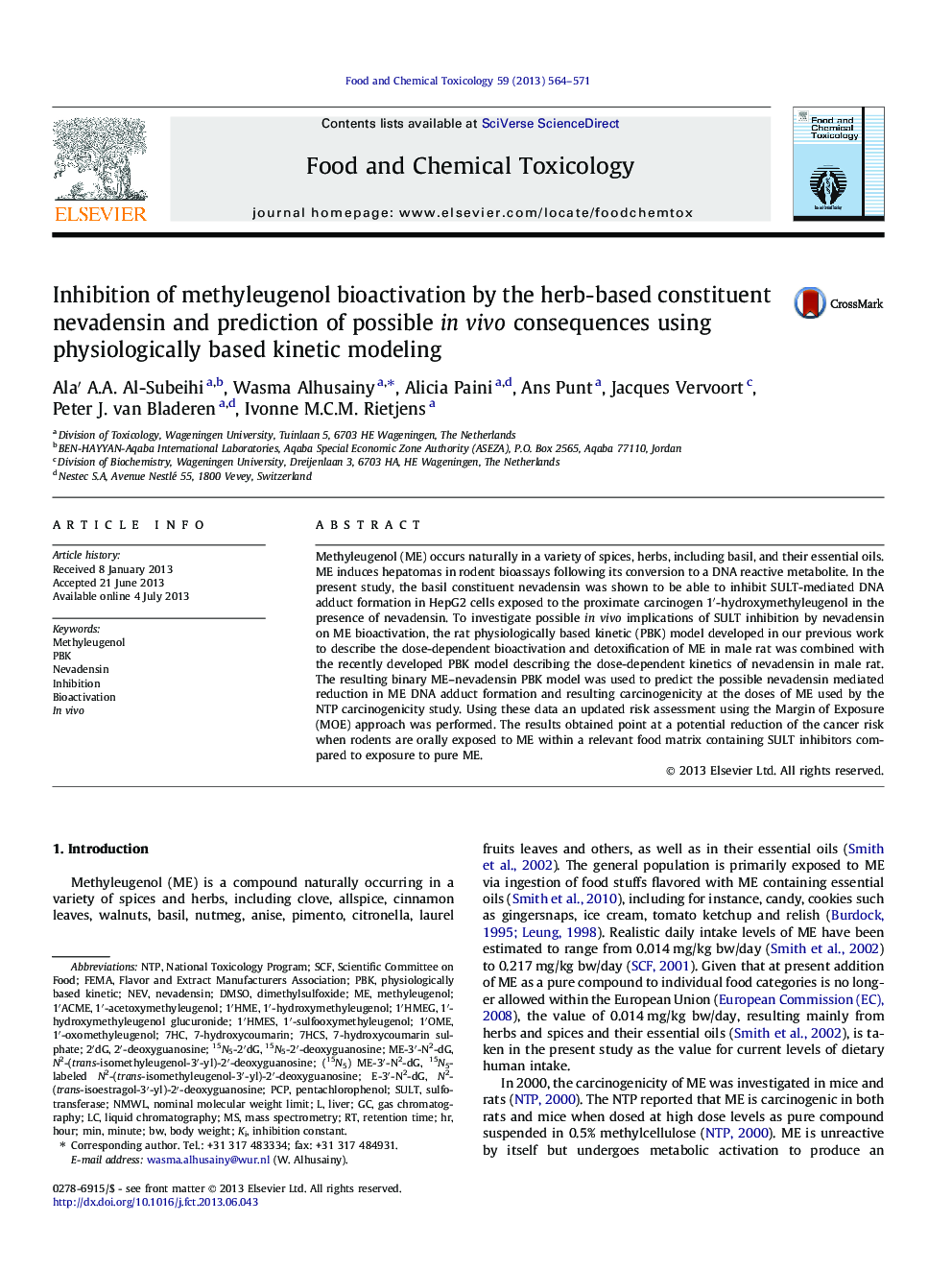| Article ID | Journal | Published Year | Pages | File Type |
|---|---|---|---|---|
| 5851106 | Food and Chemical Toxicology | 2013 | 8 Pages |
â¢Nevadensin inhibits ME DNA adduct formation in HepG2 cells.â¢Inhibition occurs at SULT-mediated bioactivation of 1â²-hydroxymethyleugenol.â¢The refined MOE for ME in the presence of nevadensin increased substantially.â¢Food matrices containing SULT inhibitors may reduce the cancer risk of ME.
Methyleugenol (ME) occurs naturally in a variety of spices, herbs, including basil, and their essential oils. ME induces hepatomas in rodent bioassays following its conversion to a DNA reactive metabolite. In the present study, the basil constituent nevadensin was shown to be able to inhibit SULT-mediated DNA adduct formation in HepG2 cells exposed to the proximate carcinogen 1â²-hydroxymethyleugenol in the presence of nevadensin. To investigate possible in vivo implications of SULT inhibition by nevadensin on ME bioactivation, the rat physiologically based kinetic (PBK) model developed in our previous work to describe the dose-dependent bioactivation and detoxification of ME in male rat was combined with the recently developed PBK model describing the dose-dependent kinetics of nevadensin in male rat. The resulting binary ME-nevadensin PBK model was used to predict the possible nevadensin mediated reduction in ME DNA adduct formation and resulting carcinogenicity at the doses of ME used by the NTP carcinogenicity study. Using these data an updated risk assessment using the Margin of Exposure (MOE) approach was performed. The results obtained point at a potential reduction of the cancer risk when rodents are orally exposed to ME within a relevant food matrix containing SULT inhibitors compared to exposure to pure ME.
